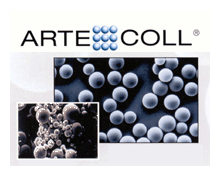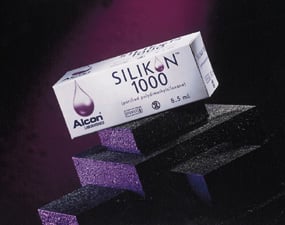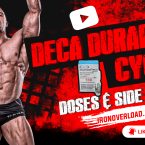Sign up to Get FREE Steroids, SARMS, Peptides eBooks
I have recently been getting reports that bodybuilders are using two new drugs to build muscle mass locally through site injection. The drugs Artecoll and Silikon 1000 come from the world of dermatology, but bodybuilders are using them for site enhancement to great effect. Both drugs are new and neither have been approved by the FDA. Dermatologists are using them as replacements for collagen injections. Injected subcutaneously, they smooth wrinkles and give the appearance of smoother skin. But unlike collagen which lasts only three months or so, both Artecoll and Silikon are permanent. In the reports that I have received, bodybuilders are using these drugs to build phenomenal biceps, calves, and to shore up other lagging body parts by injecting these substances deep into the belly of the muscle itself where it can make the muscle dramatically bigger.
Bodybuilders are using these drugs in the same way that they used the old site injection oils in the past. In case you\'re not familiar with using site injection oil to build muscle, here\'s a quick history...
Chris Clark was the inventor of the original site injection oil, that he marketed under the name Synthol -- it also went by the names Synthrol 877 and Synthrol 873. Clark was a steroid dealer who became obsessed with the idea of developing a product that could make muscle bigger by expanding it locally with oil. One version of his original Synthol contained anabolic steroids, but others just contained Clark\'s mixture of oils.
Reports have it that during the development of Synthol, Clark injected himself repeatedly with a variety of different oils that he had tried to sterilize in his kitchen. Legend has it that he injected so much oil that he almost died on several occasions from pulmonary embolisms. And he almost lost one of his legs below the knee due to a horrible infection. But, did this stop Chris Clark? Absolutely not!
All the pros and top amateurs began using Synthol and other site enhancement oils. The lucky ones had avoided abscesses. Some had good results whereas others looked like they had small balloons of oil sitting on top of their muscles. Those that had better results usually had gone deeper into the muscle tissue using longer 1.5 inch needles. Going deep into the muscle fiber, they had lifted and spread the muscle from underneath instead of forming a swimming pool of oil on top of the muscle tissue.
With the new drugs Artecoll and Silikon 1000, bodybuilders are hoping to achieve better site specific results and at the same time avoid the sterility issues that came with the bathtub-made site enhancement oils. Here\'s some information about Artecoll and Silikon 1000.
| Artecoll, believe it or not, is actually an injectable implant. Typically it is used for skin augmentation, but bodybuilders are experimenting with it for site enhancement through intramuscular injection. It should be noted that it is not approved for either type of use. Artecoll is composed of tiny beads called polymethyl methacrylate (PMMA) which are suspended in a collagen solution. The manufacturer added lidocaine for the relief of post treatment soreness. The sterility of this product and the lidocaine are already a big improvement over the older oils that often made bodybuilders so sore that they could not train for a week after an injection. |  |
The PMMA beads are 32-40 µm in size which is about 4 to 5 times the size of a red blood cell. PMMA has been used since the early 1930\'s in such common procedures as dental work, eye lenses, bone repair, orthopedics and in pacemakers. These beads are well tolerated by human tissue (no rejection).
Artecoll utilizes the body\'s natural ability to encapsulate foreign bodies by the formation of connective tissue surrounding the PMMA beads. The process of encapsulation of the beads by the body\'s own connective tissue (collagen) is complete in about 3 months. Absorption and dislocation of the beads is prevented by the encapsulation of each individual bead with connective tissue. Localized growth reportedly takes place over several months as the body forms its own connective tissue around the beads.
Normally a topical anesthetic such as lidocaine or prilocaine is put on the area to be treated one hour prior to the procedure. When used dermatologically, a series of tiny injections are made under the skin\'s surface -- bodybuilders are reportedly going deeper and with larger injections. Artecoll has an excellent safety record with less than 0.1% incidence of side effects (mainly allergy and inflammation).
The results are considered permanent; there is no need to continually retreat as with some other procedures. The implant will remain for the rest of the person\'s life. Possible side effects include swelling, redness, slight bruising and moderate pain after injection. Slight itching at the implantation site is a rather common symptom. These symptoms normally subside in a few days. Since the use of this drug is so new, some doctors speculate that the beads could potentially migrate and form clumps that would have to be removed -- although at present this is just speculation.
| Just as controversial as Artecoll, Silikon 1000 is a medical-grade liquid silicone that bodybuilders have begun to experiment with for site enhancement. The injection of liquid silicone into breast tissue was used in the 1950s and 1960s as a breast augmentation procedure. Owing to side effects such as the formation of hard masses in the breast (silicone granulomas) and possible other side effects, the technique was abandoned. And in 1992, concerns about leaks from the silicone in breast implants resulted in a ban on all cosmetic uses of the substance. |  |
Having been banned for a decade, liquid silicone injection is making a quiet comeback. Some dermatologists are now once again offering the new medical grade silicone, Silikon 1000, as a wrinkle smoother to patients wanting to avoid a face lift. And some bodybuilders are also experimenting with it for site enhancement.
Silikon 1000 is a silicone preparation that was approved in 1997 to treat detached retinas. Using it for wrinkles or site enhancement is off label use by physicians.
What makes Silikon 1000 of such interest to dermatologists and bodybuilders alike is also what causes such concern; namely, liquid silicone is permanent. Silicone makes an attractive filler because of its longevity -- once injected, it cannot be removed. Silikon 1000 has recently been approved for testing on facial wrinkles, depressions, and AIDS related facial wasting.
For some, the problems that plagued silicone in the past can be attributed to improper technique or using an adulterated or impure formulation. Even today, in the transgender community, there are still deaths reported not infrequently from "silicone parties" where non-medical grade silicone is injected to enhance the buttocks and breasts. And there are a lot of side effects that you can get from it if it is used incorrectly. Adulterated forms can give you granulomas, which are bumps in the skin. And if silicone is used in too great a volume it can result in migration.
That said, bodybuilders have always and are still experimenting with silicone. (Rumor has it that Arnold used it in his calves decades ago. With the advent of a safer silicone, Silikon 1000, or a stack of Silikon 1000 and Artecol together, we are entering an age of injectable bodybuilding never before seen.
Although it is certainly not recommended that site injection be tried given the experimental nature of these drugs, we hope you\'ll visit the discussion boards to discuss site enhancement with Artecoll and Silikon 1000.
[sc:signoff-std]





